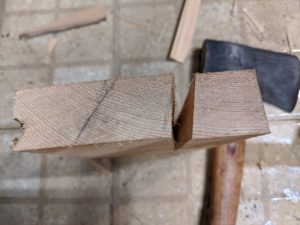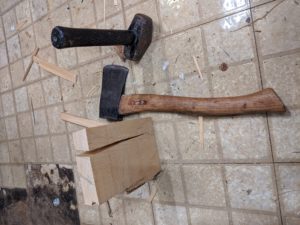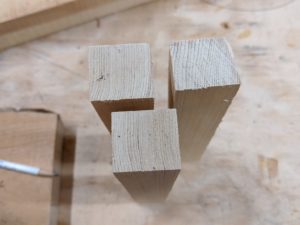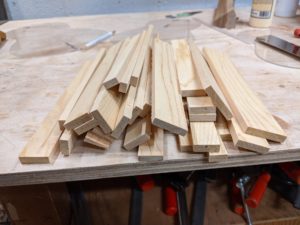I have been making my top braces out of a chunk of Port Orford cedar. It was cut from a beach log (there are marine worm holes along one edge.) Port Orford cedar is very light and stiff, and maybe being in the ocean made this board even stiffer, but in any case the sound from my instruments improved when I moved to this material for top braces.
You want the wood fibers of a brace to run along the whole brace, not slant off the side (call run-out). The way to avoid run-out is to split the wood and the split naturally runs down the fibers. Using this split face one can then saw out the braces. The board I have is flat sawn, and you want the growth rings to go up-and-down in the brace from maximum stiffness. So I cut out lengths for various braces (concert, tenor, etc.), then split the board to establish the fiber direction with an eye to getting the grain lines perpendicular to the split face.
I then clean up the the pieces to rectangular cross sections using the split reference face to keep the wood fibers aligned with the brace.
Finally I saw out rough brace stock with the growth rings going up and down in the eventual brace. These are tall slabs. The eventual height of the brace will be determined by how much stiffness/bracing a given piece of top wood wants.



